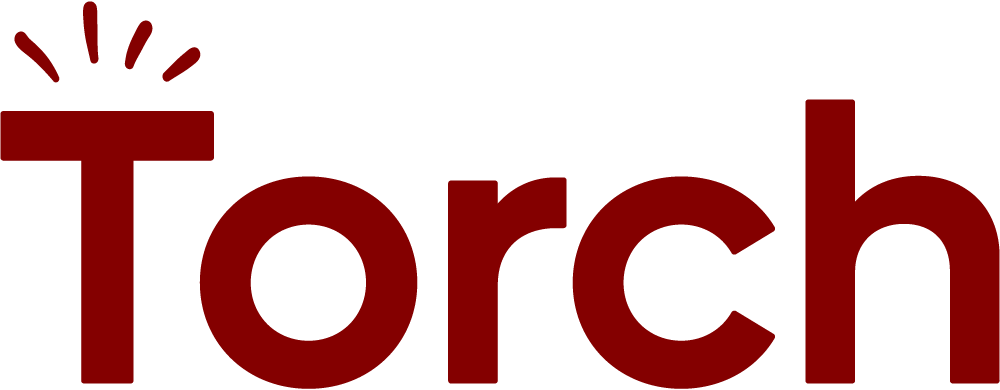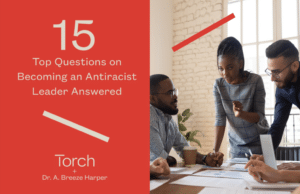At the end of August, we launched the Justice at Work community hosted on Slack. Justice at Work was created as a dedicated space for CEOs, HR and L&D leaders to discuss social justice at work and share action steps, no matter the stage you’re at now.
In addition to dedicated channels for discussion on specific topics (i.e. manager DEI training) and networking with peers, the community provides regular discussions with knowledgeable coaches and industry experts.
On August 28, we hosted our first ask-me-anything (AMA) on the topic of Social Justice 101. This discussion was led by Ernest Courant, a Leadership Development Coach at Torch, who has worked as a Coach and L&D leader at a variety of companies. Ernest has shown a lifelong commitment to social justice, having worked as an activist from his teens onward, organizing Anti-Racist trainings for his university and sitting on its Diversity Action Committee.
What follows is a transcript of Ernest’s AMA (edited to preserve anonymity and readability) in which he answers questions pertaining to social justice at work during a high-stakes election season, recruiting and hiring diversely, and more.
We’ll continue to bring you regular highlights from our Justice at Work AMA discussions, and if you’re a CEO, HR or L&D leader who would like to join the community, we welcome you.
How do I push for social justice at work in election season without doing too much to disrupt harmony?
Talking about anything remotely political can be very challenging at any time, and especially during an election season. One important approach is to think through whatever comments you make and keep them as simple and to the point you are addressing as possible, editing out any additional commentary or opinions that might trigger people.
For example, you could make a statement about the shooting of Jacob Blake, but leave out wading into the debate about what is permissible in large scale demonstrations. Most people will probably agree that the shooting was a tragedy, but you’ll find a lot more conflicting opinions when you get into to what degree police should be cracking down on the destruction of property.
That isn’t to say that we should never make statements on contentious issues. As leaders, we need to ask ourselves to what extent we work to preserve harmony on the surface, if there are deeper problems that need to be addressed. Sometimes it will be important to come out taking a stand on an issue that might be controversial within your company. While doing so violates the corporate norms of the 20th century, I don’t believe that those norms have served justice at work, nor contributed to a healthy and productive working environment in many cases.
In recruiting and hiring, how can I create a diverse team without feeling like I’m tokenizing candidates of color or hiring just based on race?
It’s crucial that any hire adds genuine value and is a good fit for the role they are filling. Hiring for diversity isn’t a compromise; there is plenty of talent available in all demographic groups. Prioritizing diversity may slow down your recruiting and hiring process, however, simply because the specificity of the search and size of the candidate pool is often smaller. So planning your hiring as far in advance as possible will help.
To avoid tokenizing anyone on your team, it’s crucial to very intentionally build a culture of inclusivity. Basic knowledge of anti-racist theory, like that provided in Torch’s Anti-Racist Leadership training, is helpful for this, just to help you watch out for discriminatory behaviors in your staff, or even power dynamics or communication styles that can make people feel unwelcome.
What are ways I can be harmfully non-racist at work without realizing it?
If you think about being non-racist as neutral, but not actually opposing racism, one of the easiest ways to recognize when this is harmful is when one is silent around racist or offensive behavior or attitudes.
I’ll give an example. I was in a situation this week with a white man, someone who is not overtly racist but is unconscious of his privilege. He got into an argument with two Black women about a situation where someone had been accused of being racist, and was completely negating the women’s points of view.
I could have stayed silent easily, which would have been a passive, non-racist, behavior. That would have left the two Black women to wage this argument against the white man without any support. Instead, I stepped in, validated their points, and engaged in dialogue with the man about the problems with what he was saying.
By failing to do that, I would have caused harm with my silence, as he would have been free to abuse his privilege in the dialogue, and the two women would have been left to argue their case without an ally.
What are some ways to tailor my management of BIPOC direct reports that helps me be more supportive of them? Is there a one-size fits all approach that isn’t counterproductive?
There is no one size fits all approach. Each person is unique, regardless of group membership or racial identity. Having said that, it is important to be mindful of what a BIPOC person may be experiencing if you work in a company in which they are a minority.
First and foremost, follow the same good management practices you would with anyone. Get to know the person and their motivations. Take an interest in them as an individual. Set clear expectations for performance and ensure that they understand them. Make sure you are on the same page consistently. Communicate feedback consistently and transparently, and ask for feedback regularly.
Keep an eye out for how they are being treated by others, and ask about their experiences at the company (e.g. how they find the culture, etc). That can help unearth if they’ve experienced any discriminatory behavior.
The bottom line is to be as transparent and real with people as you can. If you see, or suspect, that they have encountered bias at work, say something about it, even if it doesn’t rise to the level of misconduct.
In my work coaching Black professionals, we keep an open dialogue about race and how that affects their experiences at work. Just that realness can make a huge difference.
Looking for more insight on social justice and anti-racism at work?
Download our free ebook on becoming an antiracist leader below




